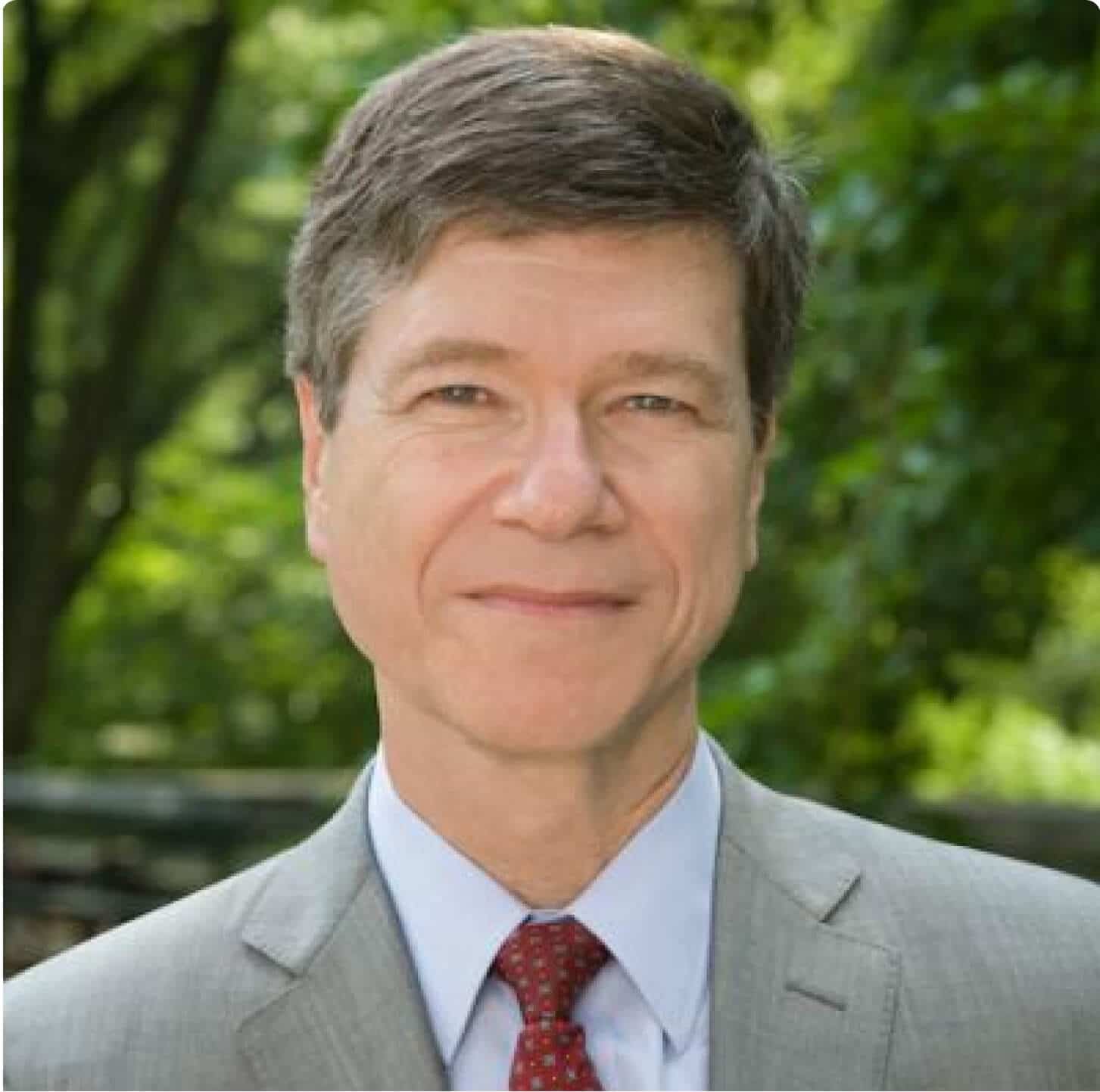US Must Transition To Low-Carbon Energy
Energy is the lifeblood of the economy. Without ample, safe, and low-cost energy, it is impossible to secure the benefits of modern life. For two centuries, fossil fuels — coal, oil, and natural gas — offered the key to America’s and the world’s growing energy needs. Now, because of global warming, we have to shift rapidly to a new low-carbon energy system.
President-elect Donald Trump has vowed to resurrect coal, promote gas fracking, and restart the Keystone XL pipeline project to bring Alberta, Canada’s oil sands to market. He won’t get far. Today’s low world prices of oil, coal, and gas reflect the fact that newly installed power generation and vehicles worldwide are shifting decisively to low-carbon energy.
The world has far more fossil fuel reserves than can be safely used. Many will stay in the ground, forever. Saudi Arabia, not Alberta, is the low-cost oil supplier. Investors in a resurrected Keystone would go broke, as have investors in coal. Wall Street figured this out long ago.
Nonetheless, Trump may well try to resist the tide at the start. In that case, climate change would quickly become his biggest controversy, costing decisive political capital as the climate debate engulfs his nominations, undercuts America’s diplomacy, and stymies infrastructure plans as well. The US government would be challenged in courts across the country. We are not back in 2001, when George Bush pulled out of the Kyoto Accord. Now the entire world, not just a group of high-income countries, has signed on to climate action.
What’s also clear is that climate change, together with mega-student debt and the loss of entry-level jobs to robots, will trigger a millennial revolt. Twenty-five-year-olds starting out in the workforce, and 35-year-olds with young children, are not going to settle for a septuagenarian president repeating climate falsehoods and squandering their future.
While the president-elect and a few self-serving coal and oil executives might still pretend that climate change is overblown, the rest of the world knows better. For 120 years, scientists have known that burning fossil fuels adds to the carbon dioxide in the atmosphere and thereby warms the planet. Last year was the warmest year since record keeping began, in 1880, and 2016 will be warmer than 2015. Around the world, people observe and suffer the consequences.
For this reason, every nation in the world, including the United States, agreed in Paris, in December 2015, to shift to a low-carbon energy system. The Paris Climate Agreement went into force this month. The global agreement aims to keep human-caused global warming to “well below 2-degrees Celsius” (3.6 degrees Fahrenheit) and to aim for no more than 1.5-degrees Celsius (2.7 degrees Fahrenheit), all measured relative to the earth’s temperature at the start of the fossil-fuel era (around 1800). The warming of the earth up to 2016 is already around 1.1 degrees Celsius, more than halfway to the globally agreed upper limit.
Climate scientists have come up with a tool called the “carbon budget” to guide us back to climate safety. Roughly speaking, the earth’s warming is proportional to the cumulative amount of fossil fuels burned or carbon release into the atmosphere by cutting down forests. To have a “likely” (that is, two-thirds) probability of staying below 2-degrees Celsius warming, humanity has a remaining carbon budget of around 900 billion tons of CO2.
To put the remaining 900 billion tons into context, the world as a whole is currently emitting around 36 billion tons of CO2 into the atmosphere each year. At the current rate of fossil fuel use, the world therefore has only about 25 years remaining to stay below 2-degrees Celsius, with a two-thirds probability (and still a hefty one-third chance of exceeding 2-degrees C). The key is an energy “transplant” that replaces coal, oil, and gas, with zero-carbon energy such as wind and solar power, or that combines the continued use of some fossil fuels with technologies that capture CO2 and store it safely underground (known as carbon-capture and storage, or CCS). Such an energy transplant may seem impossible, but it’s actually well within reach, in fact underway.
Most of the key changes will hardly be noticed by most of us. Instead of driving a Chevy Malibu, with a gasoline-burning internal combustion engine under the hood, we will instead drive a Chevy Volt, with an electric motor under the hood. Instead of charging the Chevy Volt with the electricity currently generated by a coal-burning power plant, the power plant will instead use wind, solar, nuclear, hydroelectric, or some other noncarbon energy technology (such as CCS) to generate the electricity.
Forward-looking engineers have already given us a pretty good roadmap from fossil fuels to zero-carbon energy. There are three guidelines.
The first is energy efficiency. We need to cut back on excessive energy use by investing in energy-saving technologies: LED lighting rather than incandescent bulbs; smart appliances that do not draw energy when not in use; better housing insulation and passive ventilation that cut heating needs (and heating bills); and so forth.
The second is zero-carbon electricity. Depending on where you live, your power today is generated by a mix of coal, natural gas, nuclear power, hydroelectric power, and a bit of wind and solar power. By 2050, electricity should be generated entirely by noncarbon sources (wind, solar, hydro, geothermal, nuclear, tidal, biofuels, and others) or fossil fuels with CCS.
The third is called fuel switching. Instead of burning gasoline in the car, you would use electricity in its place; instead of burning heating oil to warm the house, you would use electric heating. For every current use of fossil fuel, we can find a low-carbon fuel substitute. Most of us would hardly notice the difference. The main thing we would notice is a slightly higher electricity bill and a vastly safer climate. But even the slightly higher costs are likely to be transitory. As producers slide down the learning curve, the costs of electric vehicles, industrial fuel cells, fourth-generation nuclear power plants, and solar grids are likely to fall significantly.
We’ll also enjoy the new low-carbon technologies more than we do today’s. Smart electric vehicles will not only be cleaner and safer but will also drive you to work while you read the morning news. The shift from coal to renewable energy and from gas-guzzlers to electric vehicles will clear the deep smog that now envelopes Delhi, Beijing, and other places now literally choking on their air. That’s why China politely reminded the United States this past week that the global climate agreement is here to stay.
The challenge is to make the energy transition quickly, seamlessly, and at low cost, without destabilizing the energy system or putting America’s industrial companies at a competitive disadvantage with enterprises in China, Mexico, and India. The beauty of the Paris Climate Agreement is that all countries are now in this effort together.
Is the energy transition worth it? Much of the transition will pay for itself, in the sense of cleaner air, better appliances, and better services. Yet some parts will require a small extra cost for essentially the same energy services, at least at the start.
But here’s a critical point to keep in mind. The last time the earth was less than 1 degree warmer than now (about 130,000 years ago, in a geological period called the Eemian), the ice sheets in Antarctica and Greenland had disintegrated to such an extent that the global ocean level was around 5-6 meters higher than today. Today’s small-island economies would disappear.
I’m not talking only about the Maldives and Vanuatu. Manhattan would be inundated, and Boston, too, would be mostly under water.
But the risks transcend the disasters facing New York City, Boston, New Orleans, and countless other low-lying cities around the world. Global warming has already destabilized food supplies in many parts of the world, and there is much worse ahead unless we undertake the energy transplant. Syria, to name just one case, experienced its worst drought in modern history between 2006 and 2010, leading to impoverishment, hunger, forced migration, and social instability that provided tinder for the war that broke out in 2011.
Many Americans understandably fear the job displacements that would hit today’s coal miners and oil roustabouts. Fortunately, the news on this front is reassuring. At latest count, the total number of coal miners in America is around 16,000, out of a labor force of 150 million. Total extraction workers in coal, oil, and gas combined is around 150,000, around 0.1 percent of the workforce. These workers, whose physical health is routinely crushed for corporate profits, can easily be compensated and retrained for much healthier work and better wages. Other workers in the fossil-fuel sectors — accountants, managers, programmers, and the rest — will be needed directly in the new-energy sectors and in other parts of the economy.
There are a few true economic “losers” in America’s energy transformation, and David and Charles Koch are perhaps among them. The Koch brothers own the largest private oil company in the world. In their narrow private interest, it might be better for them to defend their $100 billion oil industry investment and wreck the rest of the world. After all, they can afford to buy new property above the rising sea level. Yet even on that narrow and extremely callous calculus, uncontrolled climate change is certainly not better for the Koch family children and grandchildren, who would suffer dire consequences from their parents’ and grandparents’ selfish disregard for humanity’s needs.
Recent excellent work by my colleague Dr. Jim Williams and other energy specialists has charted the US energy transition to 2050. Just this week, the White House issued a superb United States Mid-century Strategy for Deep Decarbonization along the same lines. It turns out indeed that renewable energy, nuclear power, and carbon-capture and storage technologies offer a range of possible pathways to decarbonization. North America is blessed with vast stores of renewable energy, including solar power in the southwest, wind power in the Midwest and eastern seaboard, and vast hydroelectric potential in Canada. And if you don’t like nuclear power or CCS, it’s still possible to make the transition to low-carbon energy, but at a higher cost. (Not surprisingly, the costs rise a bit when options such as nuclear energy are taken off the table).
The bottom line of these scenarios is reassuring. According to Williams’s study, the cost of decarbonizing the US energy system is less than 1 percent of national income per year, perhaps much less. While one percent of GDP is not negligible, it will be a very small price to pay for global climate safety. Similar calculations, and similar bargains, will be the case for the energy transplant operation in other parts of the world. A few lucky places, with magnificent wind, solar, or hydroelectric power will find the incremental costs of zero-carbon energy systems to be negligible.
If the energy challenge is all so clear, why isn’t it happening? First, some part of the energy transformation is already underway, with a rise in deployments of wind and solar energy. Now that the climate risk is finally appreciated worldwide, the entire world is ramping up for energy-transplant surgery. The second is that powerful vested interests, including the Koch Brothers, ExxonMobil (until recently), and Peabody Coal told the American people lies about climate change for years and, even worse, funded the campaigns of politicians who have been willing to oppose climate legislation in return for campaign dollars.
And third, stunningly, because of the same lobbying pressures, long-term energy thinking has been largely blocked. The first step for Trump and Congress in January should be to call on the National Academy of Engineering to mobilize the great engineers across America to come up with a climate-smart energy strategy that makes sense for all regions of the nation. Then the president’s new infrastructure program would build the right kind of future.

